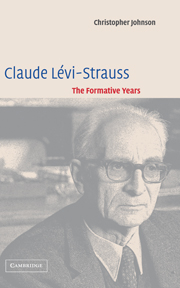Book contents
Introduction: Before and after structuralism
Published online by Cambridge University Press: 05 June 2012
Summary
Claude Lévi-Strauss can be regarded as one of the major intellectual figures of the twentieth century. An anthropologist by profession, author of works whose technical complexity would seem to exclude all but a small group of initiates, everything about Lévi-Strauss would seem to confine him to the more esoteric spheres of academic exchange. And yet his reputation extends far beyond his original area of specialization. In France, by the end of the twentieth century, he had assumed the status of the elder of the tribe, a respected sage, a ‘living national treasure’. Repeatedly, surveys of the French intellectual scene have designated him as France's leading thinker, and he has been the subject of countless interviews.
Born in Brussels in 1908, Lévi-Strauss's original training was in philosophy, but like a number of his contemporaries he quickly became disillusioned with the subject and decided to concentrate on ethnology. After a year in secondary education he was offered a teaching post in sociology at the University of São Paulo, which enabled him to undertake a series of fieldwork expeditions into the Brazilian interior. His contacts with the indigenous inhabitants were vividly described in Tristes tropiques (1955), an autobiography which has since become a best-seller and ensured his wider celebrity. The crucial experience, however, was the period spent teaching in New York during the war, when he met most of the leading American anthropologists of the day, and began what was to be a lifelong friendship and collaboration with the Russian phonologist Roman Jakobson.
- Type
- Chapter
- Information
- Claude Lévi-StraussThe Formative Years, pp. 1 - 11Publisher: Cambridge University PressPrint publication year: 2003



